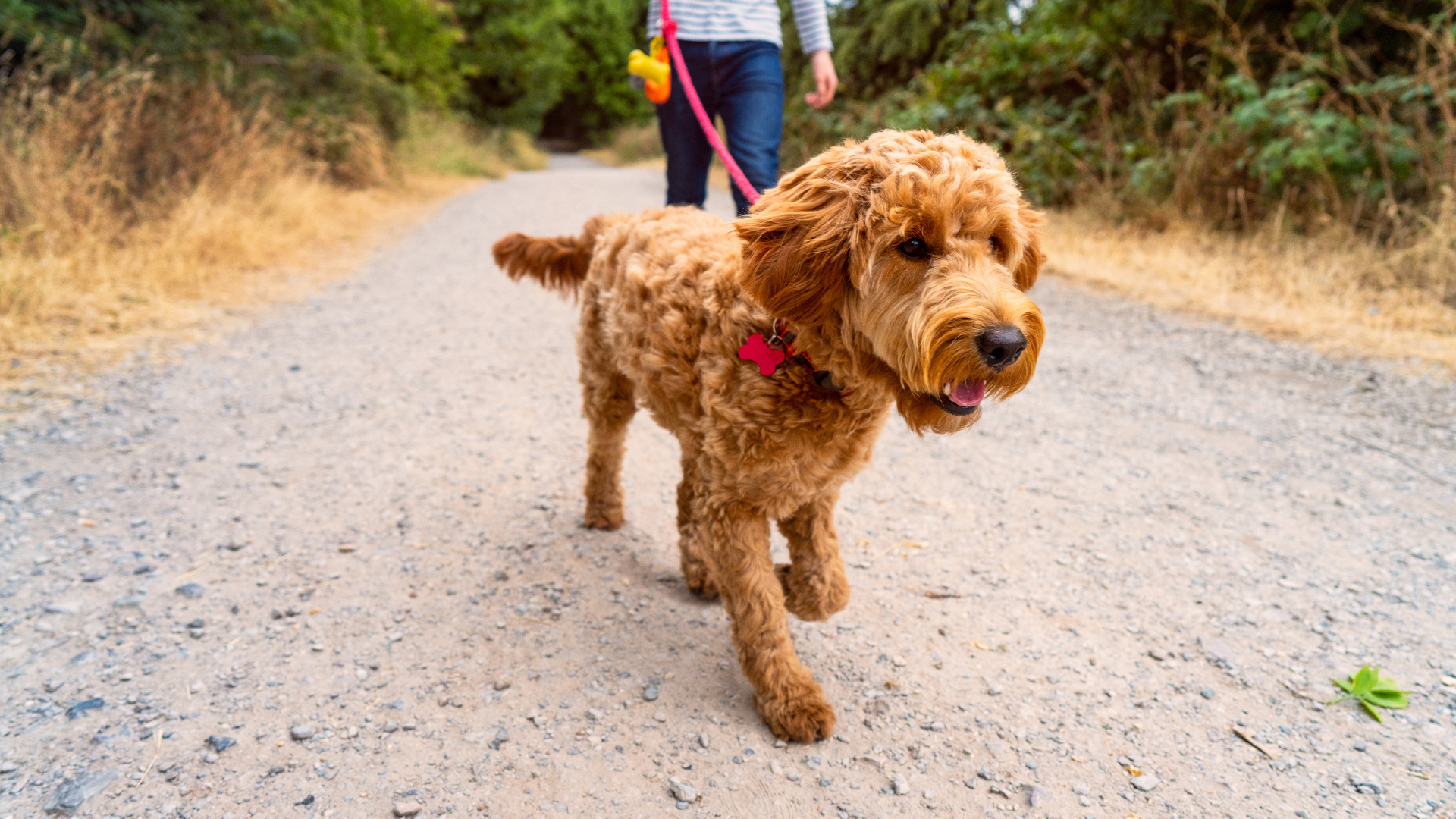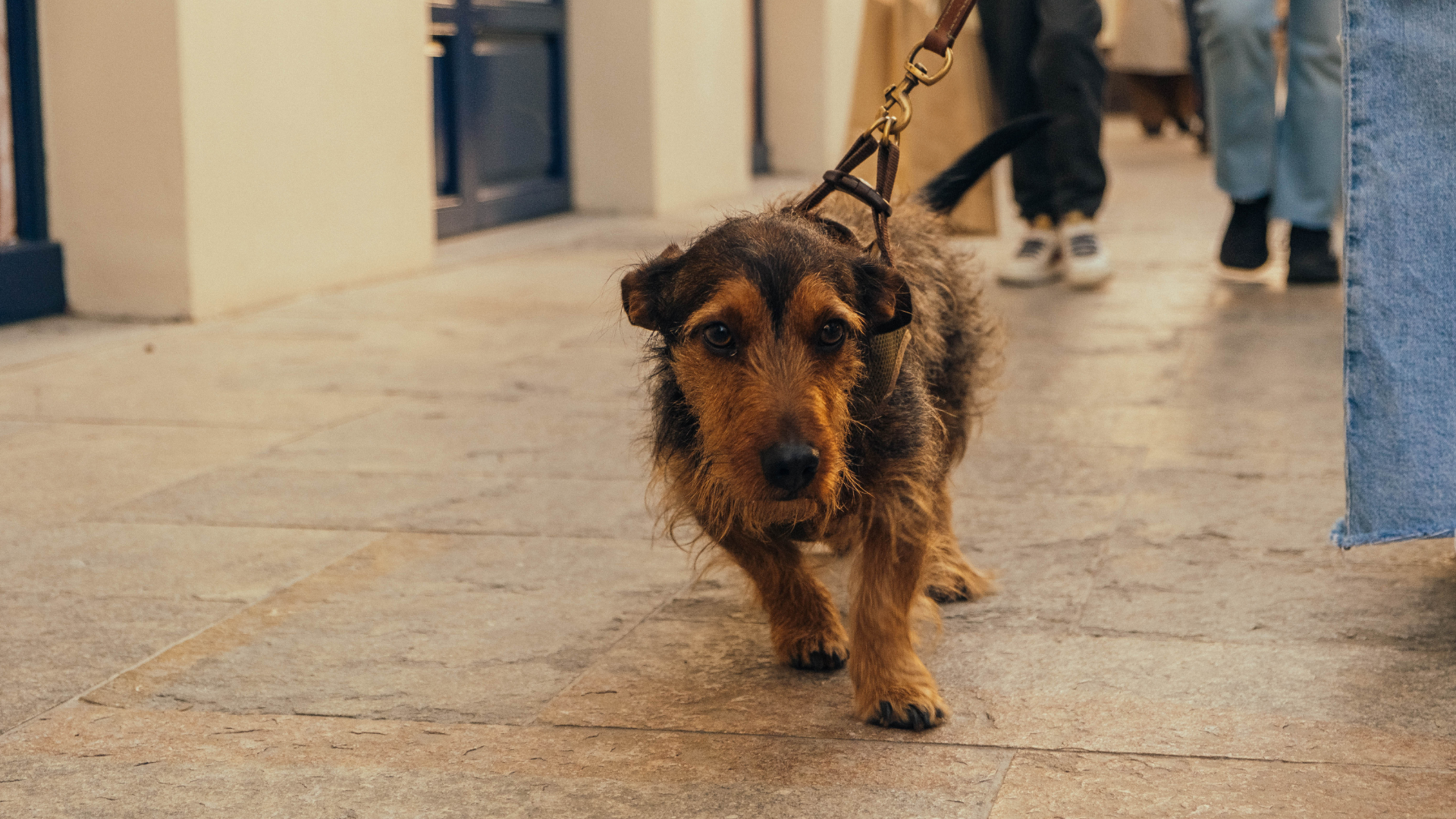Why does my dog walk sideways? A vet explains
Wondering, 'Why does my dog walk sideways?' An expert has the answer.

Have you ever been out walking your dog and thought, 'Why does my dog walk sideways?' It’s not an uncommon query; as a vet, it’s something I’ve seen a few times. In most cases, dogs are actually moving forwards, but their body is curved so that their back legs are off to one side.
Dogs walk sideways (also known as ‘sidewalking’, ‘sidewinding’, and ‘crabbing’) for a number of reasons that we’ll cover in a minute. But before we go into the medical reasons your dog might walk sideways, I want to quickly point out a not-so-obvious physical reason for crabwalking in dogs: bad equipment.
Dogs can walk sideways or wonkily when they are uncomfortable due to a poorly-fitting harness or a leash that’s restricting their movement. To rule this out, see if your dog walks sideways when they aren’t wearing anything indoors, and make sure you buy the best dog harness and the best dog leash.
If you’re confident it’s not your dog’s harness or leash causing them to walk sideways, carry on reading and we’ll go into the other causes of dogs walking sideways and what to do about it.
Why does my dog walk sideways?
]Dogs walking sideways can really surprise pet owners who haven’t seen it before and it’s normal to wonder if there’s something wrong with your dog. Other than bad equipment, which can restrict a dog’s movement, there are a few other reasons dogs walk sideways:
Behavioral
Some dogs walk sideways as part of submissive signaling. In this case, they walk forwards while also bending their backs to show the other dog their bottom. They’ll usually vary the side they bend to as they attempt to approach while being submissive.
Dogs on heat may also approach other dogs bum-first, meaning they have a strange sideways walk. If this sounds like your dog, there’s nothing you need to do – just make sure they don’t get pregnant if they’re walking sideways because they’re in heat!
Hip dysplasia and other hip pain
Dogs with hip pain might favor one leg more than the other, causing them to walk sideways. They often have a short stride due to the reduced range of motion of their hip joints, giving them a stilted gait. Hip dysplasia in dogs is more common in large breeds and, if you suspect it, you should schedule a vet visit.

Long legs
Young dogs often have long legs for their size. This can cause them to go through a phase of walking sideways, as this gives them more room to fully move those long limbs! If your dog starts walking sideways at four to eight months and is otherwise fine, it’s possible this is the cause. That said, hip dysplasia can’t be ruled out unless you visit a vet. Luckily, if long legs are the cause of your dog walking sideways they’ll probably grow out of it at about a year old.
Balance problems eg ear infections or vestibular disease
It’s possible that balance problems can cause dogs to walk sideways. This might be vestibular disease in older dogs, while in younger dogs it’s more likely due to ear infections in dogs. It’s unlikely, however, that walking sideways will be the only symptom of a balance problem. You should also notice a head tilt, stumbling, turning in circles, and even inappetence/vomiting. If your dog hasn’t got any of these symptoms but is still walking like a crab, it’s unlikely to have balance issues.
Neck or back pain
Dogs with neck or back pain may have all sorts of gait changes, including walking sideways. They’ll be moving in the way that gives them the least pain, even if it looks strange to us. You might notice that they’re holding their head low, that they’re dragging one or more feet, or that they’re stumbling more than usual.
They might also be grumpy due to the pain. Neck and back pain can be extremely serious and if there’s a chance your dog is walking sideways due to spinal pain you should get an appointment with your vet right away. Here are the signs a dog is in pain.
What to do if your dog walks sideways
If your dog is walking sideways, it’s not always a situation for a vet. In some cases, where dogs are otherwise well and the behavior doesn’t happen too often, you might not need to schedule an urgent appointment. Instead, try to get a video of your dog walking sideways so you can show it to your vet at your next appointment.
Of course, if your dog has suddenly started walking sideways, especially if they’re older or have other signs that concern you, you might need to schedule an appointment sooner. At your appointment, explain the problem to your vet and show them a video, if you have one.
Your vet will examine your pet and will be able to tell youthe likely reasons for your dog’s crabbing. In some cases, they might recommend further tests – often imaging (x-ray, CT, or MRI) depending on your dog’s symptoms and the results of their physical exam.

Sidewalking in dogs is fairly common, and causes vary between benign behavioral reasons through to serious back pain. If you’re concerned about your dog’s gait, your vet is the first port of call.
If you found this interesting, you might want to find out about why dogs spin in circles.
PetsRadar Newsletter
Get the best advice, tips and top tech for your beloved Pets
After graduating as a vet from the University of Nottingham, Dr Joanna Woodnutt went on to practice companion animal medicine in the Midlands. Since then, she has also written for countless online and print publications and is a regular contributor for Edition Dog Magazine.

